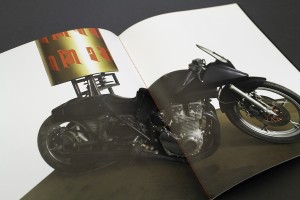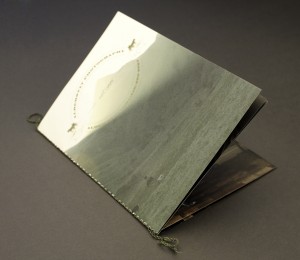Discover Unparalleled Durability and Eco-Friendliness with Saddle Sewing
Explore a unique and secure method of binding pages in a hardback book – the art of saddle sewing. Unveil the benefits of this distinctive process that goes beyond traditional sewing and perfect binding.
Unraveling the Art of Saddle Sewing
1. Versatility in Size, Focus on Thickness
Saddle sewing, also known as center-sewing or side-sewing, offers a versatile approach to binding. While the width and height have ample room for customization, the real magic lies in its ability to bind pages that are exceptionally thin. This makes it an ideal choice for projects where thickness is a key consideration.
2. Security Beyond Wire Stitching
Unlike wire saddle-stitch books, saddle sewing provides an extra layer of security for your pages. The threaded binding ensures that your book stays intact and secure, making it a preferred choice for those seeking durability and longevity in their hardback books.
3. Environmental Friendliness with Thread
For those environmentally conscious, the fact that saddle sewing involves thread rather than wire stitching is a significant advantage. As the world prioritizes eco-friendly practices, saddle sewing aligns with this growing concern, offering a sustainable and green alternative.
4. Unusual, Distinctive, and Highly Functional
If you’re in search of a binding method that goes beyond the ordinary, saddle sewing is your answer. It’s not just a method; it’s a statement of uniqueness and functionality. Elevate your hardback book to new heights with a binding process that stands out.
Why Choose Saddle Sewing?
Durability Redefined: Experience enhanced durability with pages securely bound using the saddle sewing technique.
Eco-Friendly Practices: Opt for a more sustainable option with thread binding, contributing to environmental conservation.
Unmatched Versatility: Saddle sewing allows for customization in size while excelling in binding thin pages, providing unparalleled versatility.
Ready to explore the world of saddle sewing for your hardback book? Contact us today, and let’s embark on a journey to create a distinctive, secure, and eco-friendly binding solution that surpasses expectations.
These four pictures are of a process of binding called by three names. Most common name used is center sewing. Some people call it side sewing. Others call it “saddle sewing.” I believe the most reasonable term to describe this is “saddle sewing.” The entire graphic arts industry knows what saddle stitching is and this is a very similar to saddle stitching. Only difference instead of wire stitches, it’s thread sewn. We produce these books in various quantities. They could be 16 page, 48 pages with or without a heavier cover. Any sizes from passbook sizes 3 x 4 up to 15 x 15. Thread can be one of 120 different colours. As indicated in the one books, the threads are left hanging out the top and the bottom of the book.
Saddle Sewing

Saddle sewing is a type of binding that is meant to be seen. This thread used in saddle sewn books can match or contrast the stock and graphics or be matched to a corporate colour. This unique binding method shows through the front cover and the centre spread.


The thread can be cut short or can be left long so it’s more noticeable. The above images show an example of clipped threads and long threads. The images below show some amazing specialty folds we can no do on saddle sewn books!


Saddle Sewing
I goofed in last weeks’ blog. I forgot to mention that I also own Specialties Graphic Finishers. Both Anstey and Specialties do the unusual jobs. Specialties works with the customers printed paper and produces larger jobs on automated machines. Anstey jobs are of a low quantity, Anstey supplies most of the material and the jobs are very labour intensive.
Saddle Sewing
Why sew anything when there’s good old-fashioned staples (or saddle stitching), paperback book style (or perfect binding) or … all those other options? In a word, sewn books, pamphlets and so on have ‘CHARACTER’. They will stand out, won’t be forgotten or tossed into the round bin on the floor.
Today’s terminology is saddle sewing, once known as either “Singer sewing” or centre sewing decades ago. These earlier terms are not used as much any more, in part because Singer is a largely forgotten sewing machine brand and second, centre sewing is something of a misnomer or mistaken description.
So, pretty much every graphic designer, estimator or marketer knows what saddle stitching is: metal staples—sometimes in various colours.
(maximum of 20 colours that I know of)—along the spine or binding edge of a booklet.
What does a saddle sewn book or tag look like?





Factors to consider:
Colour tests to ensure that colour of thread on the book is what you have in mind
Decision on saddle sewing must be made BEFORE layout:
- A large run will need a lip on high folio
- Similar technical, physical requirements to saddle stitching
- ‘Push-out’ or ‘shingling’ (as does saddle stitching) requires particular care at the layout stage to ensure correct line-up of graphics in the finished product
Email us at info@sgfteam.ca
Check our website at www.sgfteam.ca
Phone at (416) 701-0111
Best of all, upload a photo!
Need a sample……please e-mail and ask info@sgfteam.ca


